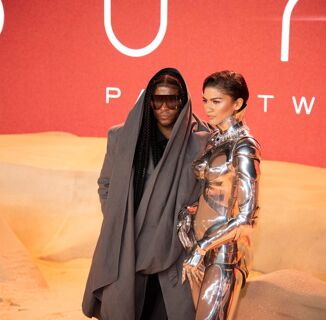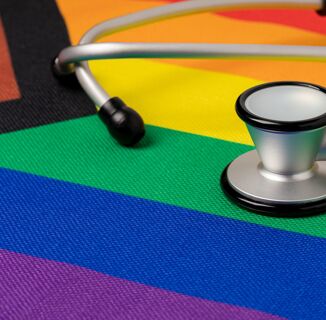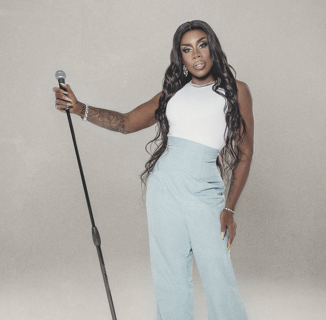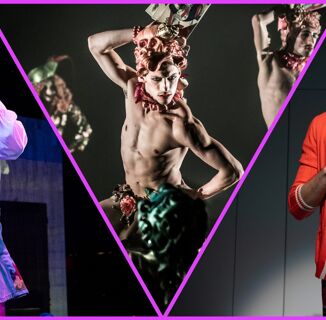I broke the cardinal rule of Twitter: I didn’t think before I tweeted. But could you blame me?
After all, the Washington Examiner shared an article: “I’m gay, but I’ll pass on Pride Month” smack in the middle of Pride Month. Furiously, I replied, but feared I was too flippant: “I’m gay but will pass on this article.” I realized, though, that what’s flippant was publishing this article without thinking about who would see it: LGBTQ people who need Pride.
If you scroll through my last few Instagram posts, you’ll see three that are in zero way shy about my sexual orientation.
The first features me wearing a peach-adorned brown shirt (if you’re confused, go watch Call Me By Your Name), dark blue running shorts, blue and rainbow beads, a rainbow sweatband and rainbow socks. Another is me in a tight-as-you-can-get bright blue tank top, 5” pink khaki shorts, more rainbow sweatbands and green beads. Surprise, everyone, I’m gay, here you go, I am perfect and happy and well-adjusted and everything is fine!!!
Yes, my outfits for Pride-related activities in Washington tell you a story about me. But they don’t tell you my whole story.
I wondered how I would feel at Pride this year. I went last year, sure, but wasn’t comfortable. I felt, in certain ways, like writer Brad Palumbo recently wrote in the Examiner piece: “It’s understandable that after decades of oppression and discrimination, gay people might want to let loose and celebrate their sexuality — but too often, these marches devolve into the same stereotypes of sexual deviancy that they’re supposed to be dispelling.”
If I wasn’t screaming “yassss,” or among a group of loud-and-proud queer friends, did I really belong there at all? I didn’t feel like it and succumbed to the impulse to blend in.
But this year I was ready for something different; ready to prioritize accepting myself. I’ve spent much of this year taking baby steps outside my tidy comfort zone despite crippling fear of failure. How did I do it? By showing up. Going to gay bars. Attending events featuring LGBTQ people of color. Reading perspectives from writers like John Paul Brammer, who unearthed the root of my prior ambivalence to Pride in a recent essay: “For gay men who are white and/or cisgender, gay men who are adjacent to the access straight white men enjoy in society, distancing ourselves from anything that marginalizes us can be a way to cling to privilege.”
This month when I put on my rainbow sweatbands and my tight tank top and my beads, I felt more free than I have in years. And it partially had to do with donning attire that I would have previously found to be too “loud-and-proud” for me, or “too gay.” When I returned to work Monday wearing my typical work clothes, I felt naked without my rainbow sweatband.
That’s why lines like this from the Examiner piece miss the entire point of what Pride even is: “If anything, real societal acceptance comes through assimilation — after all, that’s how we won public support for same-sex marriage.”
Let me set the record straight – err, gay. Same-sex marriage legalization didn’t magically make glitter rain down on the U.S. Yes, of course, appearing “normal” helped politicize the same-sex marriage movement. “The more we get married, the more normal we seem,” Andrew Sullivan, who wrote a New Republic essay on gay marriage in 1989, told The Atlantic in 2015. “And the more normal we seem, the more human we seem, the more our equality seems obviously important.”
This is the maxim I used to abide by: I am a regular guy who happens to be gay. But not everyone can “assimilate” so easily, nor should they feel like they have to. And if the recent court debate about a cake didn’t nudge you, real equality for LGBTQ people is still ways away.
White, cisgender gay men – like me – sure, can blend in fine if we want. But doing so means ignoring the queer history of Stonewall drag queens and transgender women of color, and risks us forgetting that many members of the LGBTQ community, especially LGBTQ people of color, often can’t even go for a walk without fear of discrimination or assault. Doing so means ignoring Pulse, which we should now have in mind every Pride weekend. Let’s also remember that Pride began, as many have noted before me, as a protest.
I was ecstatic to see so many different shapes and sizes and shades during Pride this year – it felt like a Stefon monologue a la Saturday Night Live. This place had everything: A shirt that says “Everyone’s a little gay”, a tote bag adorned with rainbow-tinted photos of Christine Baranski, someone wearing a rainbow strap-on, bedazzled banana shorts and so so so much color you’d think a unicorn was president. Everything was so queer and beautiful that if you were complying with society’s definition of “normal,” you were the one who stood out. I finally felt proud to be a part of it.
We need Pride Month and its associated events to remind ourselves of our collective queerness and how OK it is to be so. And if you’re queer and have trouble seeing that, I’d encourage you to read, listen and spend time with those unlike you. You might even find yourself feeling naked without a rainbow headband, too.
Help make sure LGBTQ+ stories are being told...
We can't rely on mainstream media to tell our stories. That's why we don't lock our articles behind a paywall. Will you support our mission with a contribution today?
Cancel anytime · Proudly LGBTQ+ owned and operated
Read More in Culture
The Latest on INTO
Subscribe to get a twice-weekly dose of queer news, updates, and insights from the INTO team.
in Your Inbox













